Hi!
My mom just returned from Provence, where she bought me a beautiful lightweight cotton bandana from a brand called Souleiado. In reading about the purveyors of my present, I learned that the company was founded in the 1930s when the original owner purchased a cotton printing workshop, complete with 40,000 wooden print blocks that had been used to print chintz and calico fabrics, known as indiennes, since the 1700s.1
When I was studying at the University of Virginia (go Hoos!), I wrote my senior thesis on the history of women’s clothing in 19th-century India. Specifically, I was studying how British and Indian fashion, fabric, and design crossed cultural and societal boundaries, not to mention the world.
One could argue (and I tried) that fashion created the British Empire. The East India Company, which came to own and rule large swaths of the world before the British Crown took direct control in 1858, made its fortune on the trade and import of Indian textiles, dyes, and designs (in addition to sugar, salt, spice, tea, and opium).
Cotton chintz and calico fabrics, like my new bandana, became the fashion of the day, block-printed with flowers, stripes, geometric motifs, and most notably, paisley. That pear-shaped curlicue shape (that we now connect to preppy design - think Ralph Lauren, Lily Pulitzer, and Vera Bradley), was first designed in Kashmir, over a thousand years ago, and pashminas with these designs became an essential part of the regional dress in India. By the 18th-century, these scarves had become luxurious status symbols in Britain, and demand (and cost) began to outstrip supply.
Soon, like all good colonizers/capitalism (insert sarcasm), the British quickly co-opted Indian design, setting up mills, factories, and companies in Britain to satisfy Western demand. Cheaper versions began to be produced, most notably in a small Scottish town west of Glasgow, called Paisley. The beginning of “fast fashion.” (This, in turn, decimated the Indian textile industry when they began exporting these cheaper versions back to India, but that’s a story for another day.)
At the same time, the Brits were dealing with another one of their colonies, in fact, thirteen of them. Which brings us to the bandana.
The bandana, that humble square of cotton. Developed over millennia but the first bandana as we know it today is widely credited to the time of the American Revolution when Martha Washington (of all people!) commissioned a souvenir bandana printed with a likeness of her husband, George W. (the first, lol) from John Hewson, a talented printmaker who didn’t mind defying the British ban on textile manufacturing.2 (Why didn’t I learn about this in elementary school? Would have paired well with Betsy and her flag.)
Like America, the bandana took off from there. It became an accessible accessory used to symbolize any manner of causes. And it looked great. During World War II, Rosie the Riveter secured it as an essential wartime necessity, rooted in practicality and work, the American way. In the 1950s, John Wayne made it the epitome of rugged, western, cowboy cool.
And now I’ve discovered the bandana. I got my first one as a gift-with-purchase (or GWP as we call it in the industry) from the French brand Sezane (nothing like exploring personal style with something free!), and then I bought one in London made by a small British design studio from Liberty fabric. And now I have my French version, thanks to my mom.
Here’s how to use it:
Tied around your neck for the perfect pop (I suggest pairing it with something relaxed, like a tee, sweatshirt, or oversized oxford shirt. I wore mine with a lightweight cashmere (Kashmir!) sweater and a navy blazer the other day and was asked if my look was inspired by the KLM flight attendants I’ve been traveling with so frequently. (What a burn! But it was justified. Go casual.)
As a headband
Tied around your bag strap
To mop the sweat off your face in 90% humidity
To wipe your kid’s nose
To spread out on a picnic table for your cheese plate
Wash, wear, repeat.
Here are some bandanas I’ve found online that I like. In my opinion, this is an accessory that should be enjoyed as it was intended: an inexpensive, humble, beautiful piece of natural cotton. There are many “elevated” (the most overused word in the fashion industry) options from Hermes and the like. I suggest you stick with the ethically - produced versions (made in India or the USA) for under $50.
(I think I’ve mentioned Block Shop before, but it is a textile and decor brand founded by sisters Hopie and Lily Stockman (Lily is also a rising - nay, shooting - star in the art world). They celebrate and promote Indian block-printing, working closely with a team in Jaipur. I consider their designs the definition of wearable art.)
Enjoy!
x Lindsay
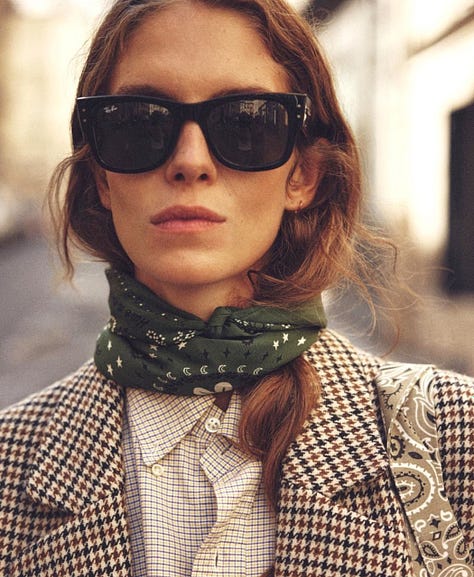
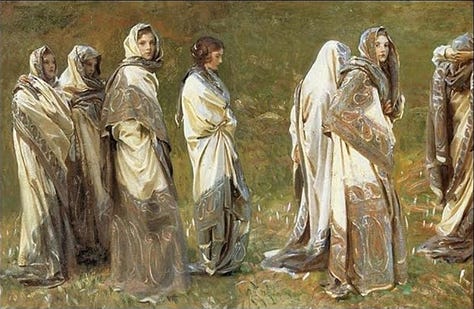
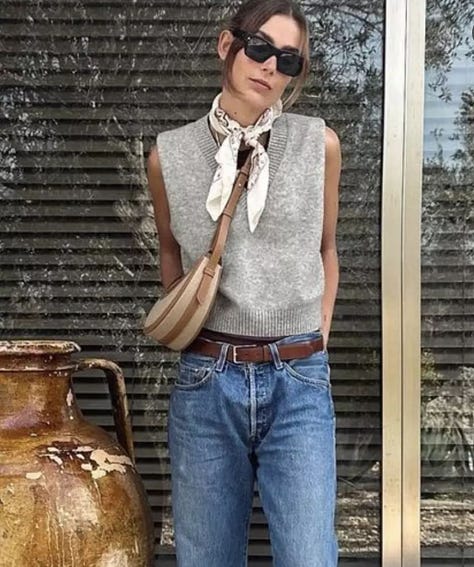
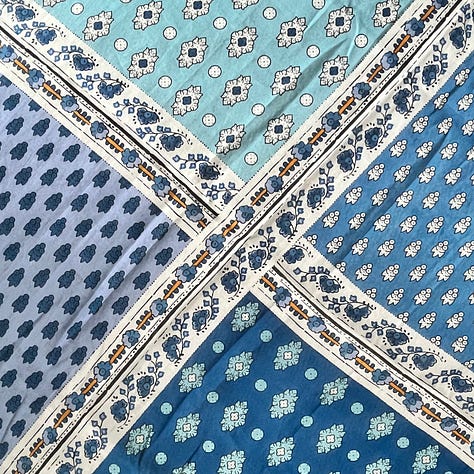
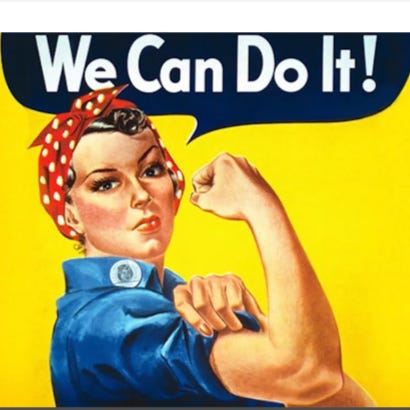
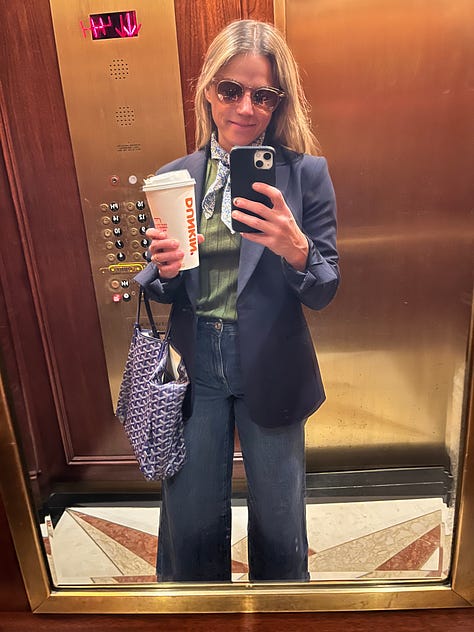
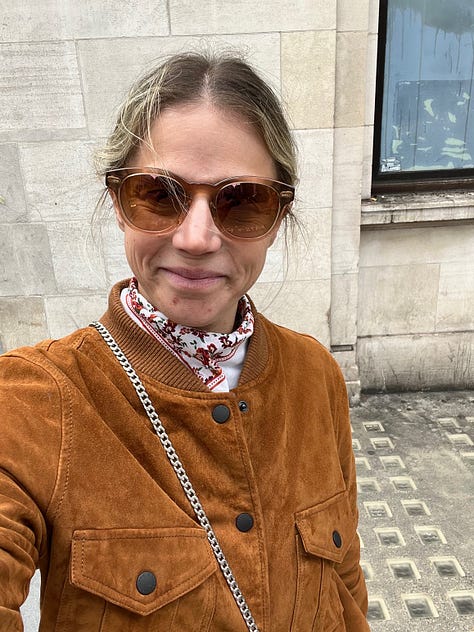
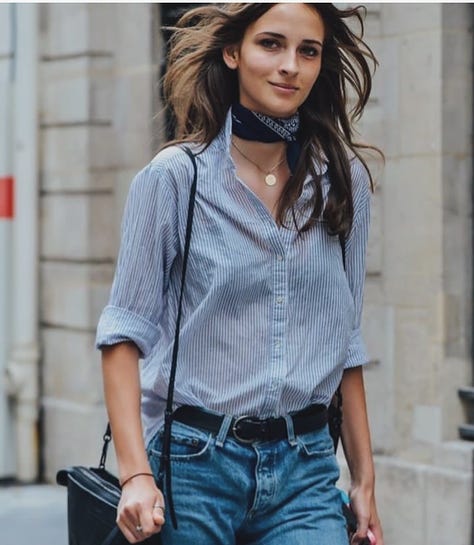
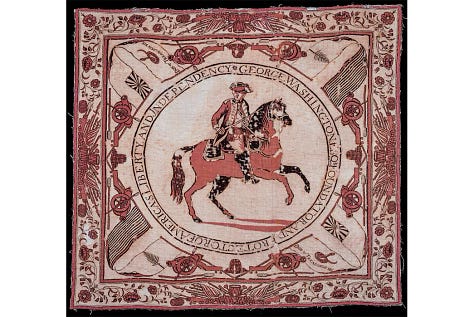




love the block shop! I have 3 of their pieces. would have bought so many more if I could!